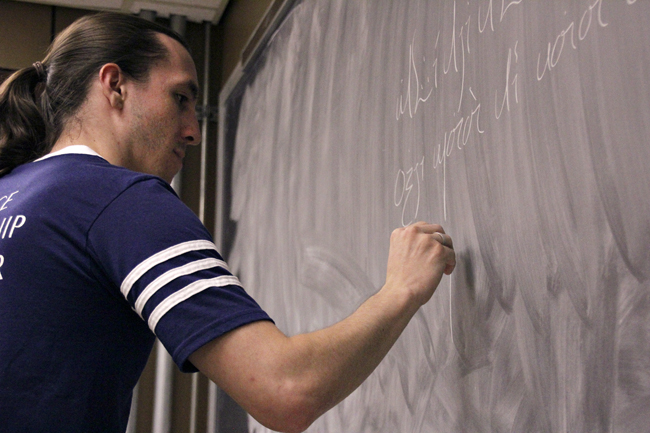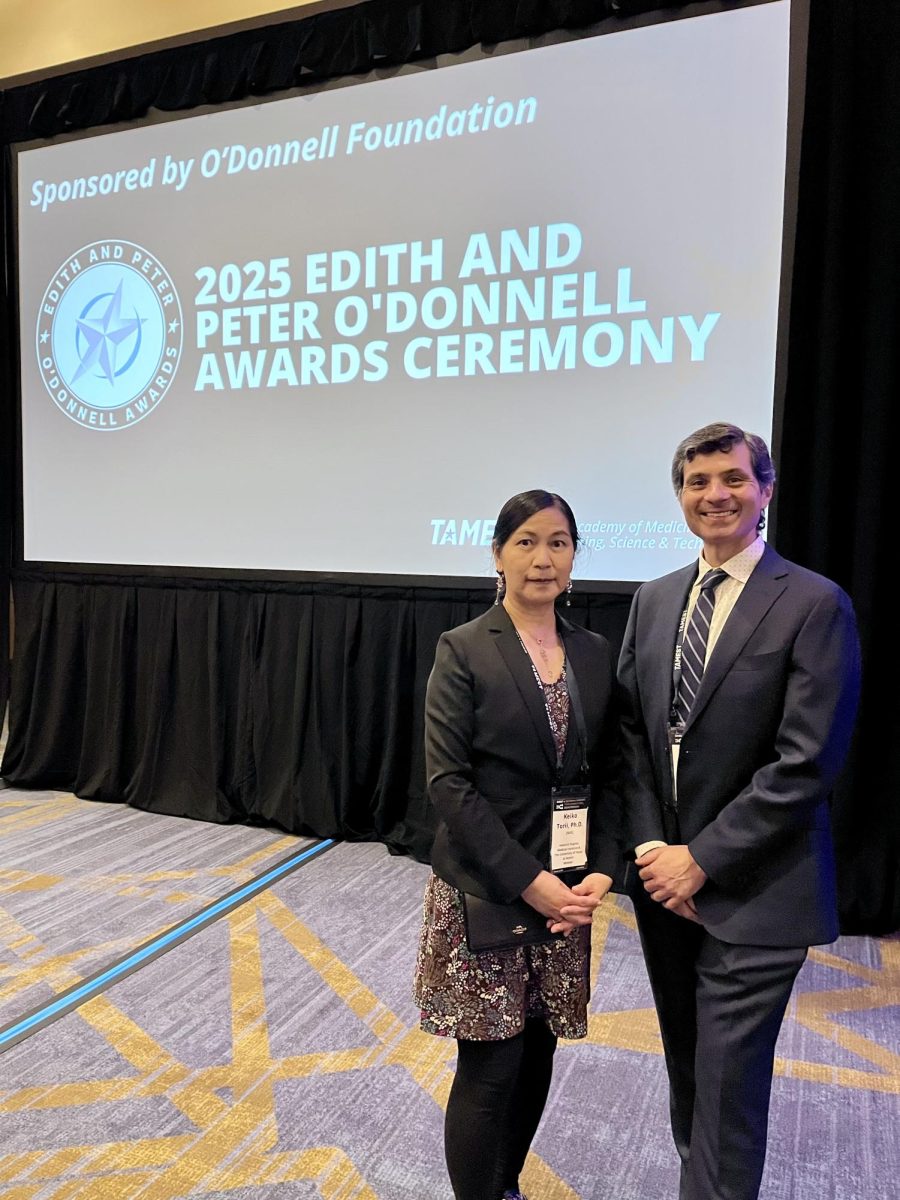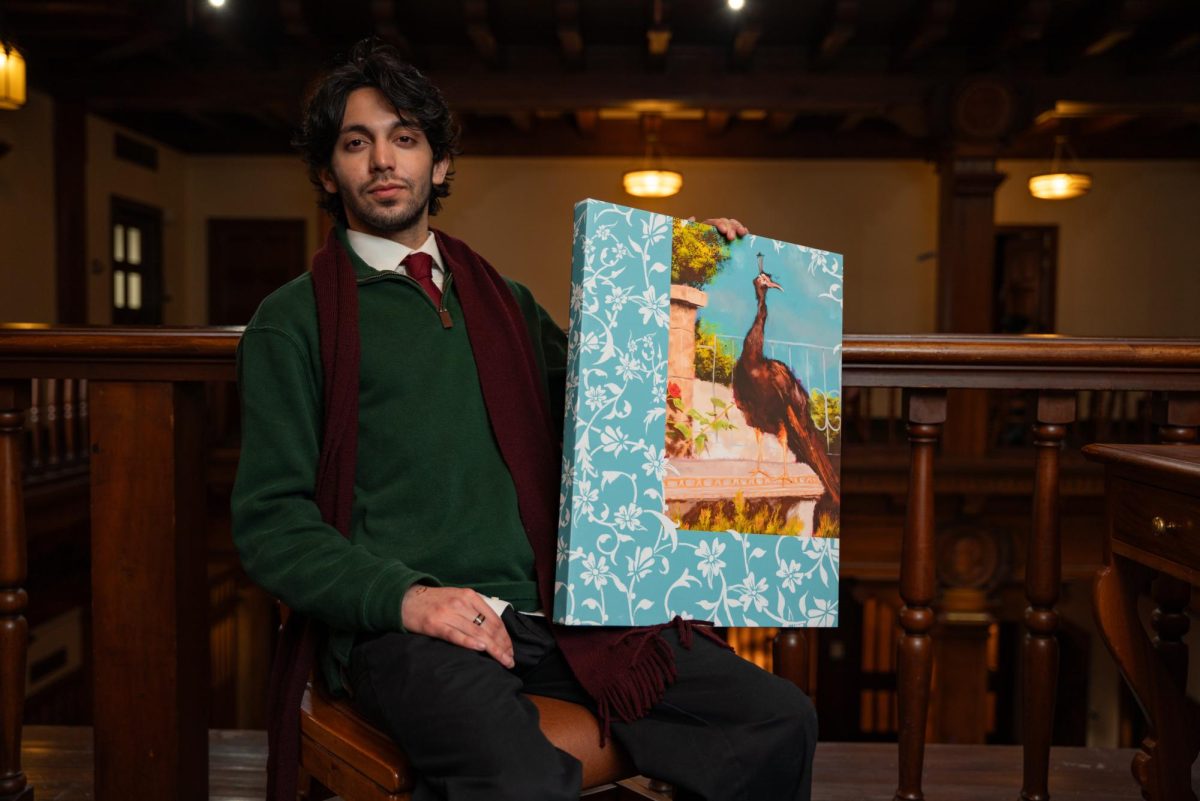“It’s like asking, what if you combined Korean and French?” business freshman Alex Sands said. Sands wasn’t talking about combining culinary styles, an obvious guess for this rare combination. He was talking about combining languages.
Last February, Sands founded the UT chapter of the Language Creation Society, an organization specifically for student conlangers. Conlangers create conlangs, or constructed languages.
Conlangers can create a posteriori languages, which are built from the vocabulary and structure of existing languages, such as the combination of Korean and French. Conlangers can also create a priori languages, which have no basis in existing languages. You might be familiar with more a priori conlangs than you think: The Klingon language from the television series “Star Trek,” the Na’vi language from the movie “Avatar,” and the Dothraki language from the television series “Game of Thrones” are all examples of a priori languages.
Conlangers create languages for all sorts of different reasons. Esperanto, perhaps the most well known and certainly the most widely spoken conlang, was created by L.L. Zamenhof in 1887. Zamenhof wanted to invent a politically and culturally neutral language that could be used across the world; he felt Esperanto could be a linguistic solution to world peace.
Conlangers also create languages for aesthetic reasons.
“Conlanging is … creating a symphonic-sounding personal expression of how the world ought to sound,” Sands said.
The personalization of language allowed by conlanging is what draws many conlangers to the hobby.
“I think I can say this for a lot of conlangers: we love linguistics, but we also like personalization,” Sands said. “If we can’t make something personal, it means less. It’s more special to us if we say it in a way that we created.”
For Sands, conlanging became a passion in the fourth grade. That was when he discovered Quenya, one of several Elvish dialects written by J.R.R. Tolkien for his “Lord of the Rings” book series.
“I thought the writing system [of Quenya] was so beautiful…that I taught myself to do it,” Sands said.
J.R.R. Tolkien, a linguist himself, famously referred to conlanging as his secret vice in a paper of the same title.
Last February Sands decided to create a UT Language Creation Society group on Facebook to see if anyone would be interested. They were. Although he didn’t publicize the club in any other way, people still joined. Soon he was contacted by David J. Peterson, the president of the national Language Creation Society.
“He was like, ‘So are you guys affiliated with us or what?’” Sands said.
Peterson, a linguist who created the Dothraki language for “Game of Thrones,” invited the UT chapter to join the national chapter. They joined in May, and the UT chapter will be hosting the Fifth Language Creation Conferenece in Austin. The event will be held in the Student Activity Center on May 4-5, 2013, and registration will be open to the public for purchase. It will feature lectures by Peterson and other prominent conlangers.
Although Sands believes that studying conlanging would be beneficial for a student of linguistics, he admits that a lot of actual linguists would probably disagree, explaining that in the academic community, many feel that conlanging is a waste of time and not real linguistics. Others both inside and outside the academic community feel that conlanging veers too easily into the realm of cultural exploitation (viewers of “Game of Thrones” will remember how the portrayal of the Dothraki race on the show, including the conlang the Dothraki people speak, seemed to many like a portrayal of Native Americans as “barbaric” and “exotic”).
Anthony Woodbury, a linguistics and anthropology professor, explained that although linguists are amused by conlanging, it’s not on their radar.
“No [linguists] so far have figured out how to extract deep principles of human language out of the study of [the conlanging] phenomenon,” Woodbury said.
Consequently, conlanging has been largely ignored by academic linguists.
However, Woodbury is quick to remember Marc Okrand, a classmate of his from graduate school at the University of California at Berkeley, who was both an accomplished linguist and a conlanger. Okrand invented Klingon, a language he intentionally designed to sound “alien.”
“It’s sort of a linguist’s inside joke, because in designing it Mark broke all the rules of language,” Woodbury said.
Printed on Thursday, November 1, 2012 as: Art of mixing languages





















